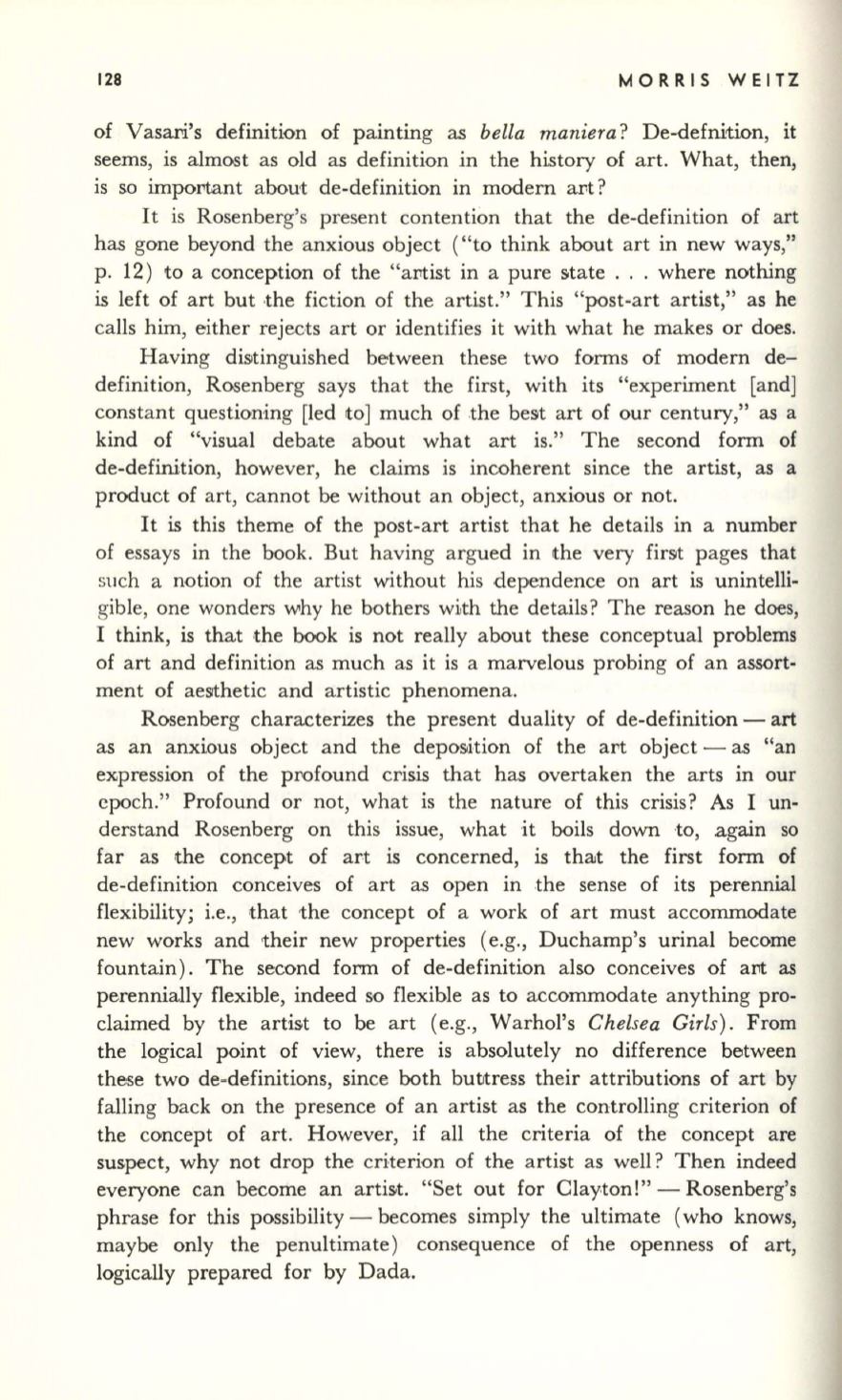
128
MORRIS WEITZ
of Vasal'i.'s definition of painting as
bella maniera?
De-defnition, it
seems, is almost as old as definition in the history of art. What, then,
is so important about de-definition in modern art?
It
is Rosenberg's present contention that the de-definition of art
has gone beyond the anxious object ("to think about art in new ways,"
p. 12 ) to a conception of the " aI1tist in a pure state . . . where nothing
is left of art but the fiction of the artist." This "post-art artist," as he
calls him, either rejects art or identifies it with what he makes or does.
Having di.5ltinguished between these two forms of modern de–
definition, Rosenberg says that the first, with its "experiment [and]
constant questioning [led to] much of the best art of our century," as a
kind of "visual debate about what art is." The second form of
de-definition, however, he claims is incoherent since the artist, as a
product of art, cannot be without an object, anxious or not.
It
is this theme of the post-art artist that he details in a number
of essays in the book. But having argued in the very first pages that
such a notion of the artist without his dependence on art is unintelli–
gible, one wonders why he bothers with the details? The reason he does,
I think, is that the book is not really about these conceptual problems
of art and definition as much as it is a marvelous probing of an assort–
ment of aestthetic and artistic phenomena.
Rosenberg characterizes the present duality of de-definition -
art
as an anxious object and the deposition of the art object - as "an
ex-pression of the profound crisis that has overtaken the arts in our
epoch." Profound or not, what is the nature of this crisis? As I un–
derstand Rosenberg on this issue, what it boils down to, again so
far as the concept of art is concerned, is that the first form of
de-definition conceives of art as open in the sense of its perennial
flexibility; i.e., that the concept of a work of art must accommodate
new works and their new properties (e.g., Duchamp's urinal become
fountain). The second form of de-definition also conceives of apt as
perennially flexible, indeed so flexible as to accommodate anything pro–
claimed by the artist to be art (e.g., Warhol's
Chelsea Girls).
From
the logical point of view, there is absolutely no difference between
these two de-definitions, since both buttress their attributions of art by
falling back on the presence of an artist as the controlling criterion of
the concept of art. However, if all the criteria of the concept are
suspect, why not drop the criterion of the artist as weU? Then indeed
everyone can become an artist. "Set out for Clayton!" - Rosenberg's
phrase for this possibility - becomes simply the ultimate (who knows,
maybe only the penultimate ) consequence of the openness of art,
logically prepared for by Dada.


